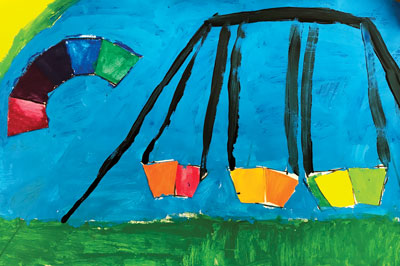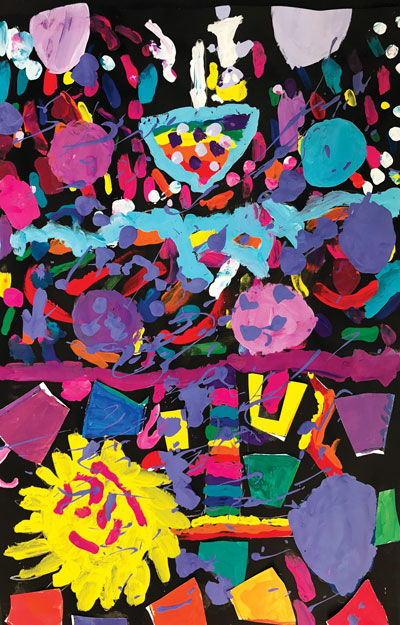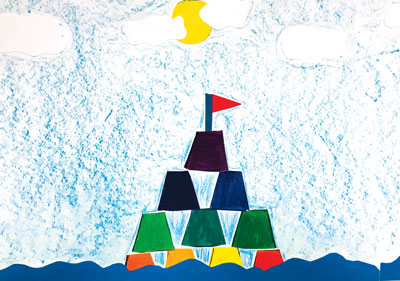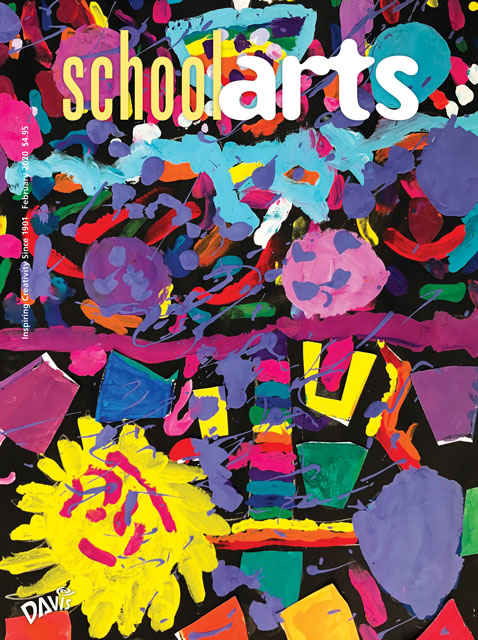 |
 |
 |
| Top to bottom: Kylie S., grade five. Katie K., grade five. Avery G., grade five. |
A History of Color
First, we start with a bit of background and review color and the classic color wheel. I share three important things to know about color, according to mensaforkids.org: (1) Color is a way that we describe an object based on the way that it reflects or emits light. (2) Your eye can see different colors because a part of your eye, called the retina, is sensitive to different wavelengths of light. (3) Humans are “trichromats,” meaning that our retinas have three different kinds of cells, called cones, that can receive color. It’s exciting for students to learn about how they actually see color.
Some of the first recorded discoveries on color and how colors relate to each other date back to the 1600s, but the circular color wheel that many of us are familiar with is mainly attributed to Sir Isaac Newton. His experiments with prisms, light, and color led to the creation of a wheel of colors in 1666.
Research and Discussion
I found a blog with images and data on the historical background of the color wheel, as well as an article by Sarah Lowengard titled, The Creation of Color in Eighteenth-Century Europe. Both of these were helpful in my research for this lesson.
After discussing what students already know about color, learning a bit of history on the color wheel, and discussing how color is used and seen in their daily lives, students were ready to get to work.
The Basic Color Wheel
I gave students blank templates of a color wheel printed on card stock. I also provided brushes, water cups, and palettes that contained red, yellow, blue, magenta, and turquoise paint. Students painted the wheels with the primary colors and then mixed and painted the secondary ones. Finally, they mixed and applied the intermediate/ tertiary colors.
The Altered Color Wheel
During the next class, I tasked students with using their color wheels in a new way. This is where the fun began! Students could cut, move around, and glue pieces; add collage, additional paint, or color—anything they wanted to do, as long as the final work included all of the colors from their color wheels in some way.
In the end, we had a wide variety of final projects. Some students sliced and diced while others created playgrounds and buildings. One student even recreated Monet’s Bridge at Giverny. Some students kept the color wheel intact and used it as a base for adding things such as a flower, eye, alien, and a lion face flipbook. Students enjoyed the lesson and appreciated the opportunity to transform the old-fashioned color wheel into something completely new.
Katie Wagner is an art teacher at Mary Endres Elementary School in Woodstock, Illinois. kawagner@wcus200.org
NATIONAL STANDARDS
Creating: Conceiving and developing new artistic ideas and work.
WEB LINK
History of the Color Wheel: bit.ly/2Jt5KA1
View this article in the digital edition.





